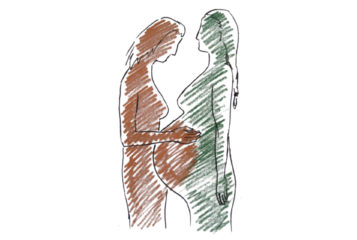Northern Ireland's High Court of Justice has rejected a claim for damages brought by two children born as a result of IVF treatment provided to their mother, which led to them being a different skin colour than intended.
The children alleged negligence by an unnamed Health and Social Services Trust (HSST), which has already admitted liability to their parents. They accused a HSST clinic of inseminating their mother's eggs with South African sperm labelled 'Caucasian (Cape coloured)' - Cape referring to a community in South Africa comprising of races of different skin colouring - rather than from 'white' donors, as requested.
The parents were anxious their children be the same skin colour, according to the children's counsel. The children were born with a darker complexion than their parents and alleged they were subjected to 'abusive and derogatory comment' from other children causing emotional upset. Both parties cannot be identified for legal reasons.
Hearing the case, Mr Justice Gillen rejected the children's argument that the defendant clinic owed them a duty of care while unborn - the time when the alleged negligence occurred. 'I do not believe that it is appropriate for a judge to stretch the common law... to embrace human cells as conferring the relevant status for a duty of care to be owed', he said.
In the judgment handed down on 13 October 2010, the judge also concluded that the children, being 'normal and healthy', had not suffered any legally recognisable harm. He held: 'It would be contrary to the principles which underlie our multi-cultural society to suggest that the genes they carry somehow render them 'a victim' at the hands of the defendant'.
Counsel for the children, Mr Simpson QC, argued unsuccessfully it would be contrary to legal policy to leave a legal wrong, the alleged negligent sperm mix-up, without a remedy. In rejecting this argument, the judge said the children had not 'suffered' from a legal wrong to demand a remedy. He said it would be undesirable to suggest 'the colour of (the children's) skin will have a 'far reaching effect on their lives' to the extent that an award of damages should be made'.
Although expressing sympathy, the court saw nothing in the circumstances to take it outside the normal approach, which is not to compensate in cases of alleged wrongful birth: 'To do otherwise would be to make a finding which would not reflect the reasonable expectation of the public in contemporary society and would accord ill with the value society attaches to children such as in the present case who have been born healthy and normal'.
Justice Gillen said the court was not in a position to make a policy judgment on the rights and wrongs of the case in general. He said: 'It is for Parliament, after the appropriate social, moral, medical and ethical arguments have been aired, to define the limits of protection which should be accorded in such circumstances'. The judge did not consider the possible argument the parents may have that they had a legitimate expectation to receive the treatment they requested and they had suffered distress by what had happened.
Sources and References
-
IVF children not owed duty of care after mix-up
-
White mother given mixed race sperm in IVF loses compensation claim
-
A (A Minor) & Ors v A Health & Social Services Trust [2010] NIQB 108
-
Judge dismisses claim for damages for children born as a result of IVF treatment






Leave a Reply
You must be logged in to post a comment.